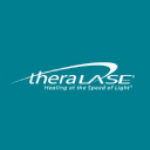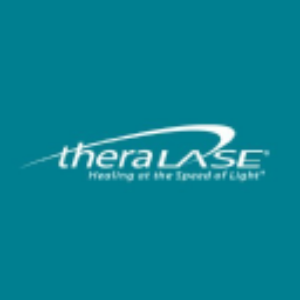Welcome to our dedicated page for Theralase Technologies news (Ticker: TLTFF), a resource for investors and traders seeking the latest updates and insights on Theralase Technologies stock.
Theralase Technologies Inc. (TLTFF) is a clinical-stage biopharmaceutical company pioneering light-activated therapies for cancer and infectious diseases. This page aggregates official news releases and verified updates about their drug development programs, clinical trials, and strategic partnerships.
Investors and researchers will find timely updates on regulatory milestones, preclinical data, and technology licensing agreements. Our curated collection includes verified information on:
• Clinical trial progress across multiple cancer types
• Peer-reviewed research publications
• Strategic industry collaborations
• Regulatory pathway developments
Bookmark this page for direct access to source materials about Theralase's innovative photo dynamic therapies and drug repurposing initiatives. Always consult primary SEC filings and medical journals for complete details.
Theralase Technologies Inc. (TSXV: TLT, OTCQB: TLTFF) has successfully closed a non-brokered private placement, issuing 10,000,000 units at $0.25 each, raising approximately $2,500,000. Each unit comprises one common share and one warrant, exercisable at $0.35 for 24 months. Proceeds will fund GLP Toxicology studies for Rutherrin, advance Phase II NMIBC clinical studies, and general corporate needs. The offering included insider subscriptions of 2,400,000 units worth $600,000, exempt from formal valuation requirements. All securities are subject to a four-month hold period.
Theralase Technologies Inc. (TSXV: TLT, OTCQB: TLTFF) has released its unaudited 2Q2022 financial results, showing a 28% increase in total revenue year-over-year, totaling CAD 552,442. The gross margin rose to 51%, up from 46% in 2021. Operating expenses surged by 43% to CAD 3,227,954, primarily due to higher research and development costs, which rose 68%. The net loss for the period was CAD 2,947,168, exacerbated by increased spending in its ACT division. Operational highlights include updates on patient enrollment and ongoing clinical studies.
Theralase Technologies Inc. (TLTFF) announced the granting of a Brazilian patent for its Metal-Based Thiopene Photodynamic Compounds. This patent enhances Theralase's international intellectual property portfolio, focusing on its Anti-Cancer Technology (ACT) platform. The patent supports the ongoing Phase II clinical study of TLD-1433 for treating Non-Muscle Invasive Bladder Cancer (NMIBC). Currently, 41 patients have been treated across 12 sites. The company aims to commercialize ACT technology and expand its therapeutic applications to various cancers, enhancing shareholder value.
Theralase Technologies, a clinical-stage pharmaceutical company, announced the peer-reviewed publication of its Phase Ib clinical study on non-muscle invasive bladder cancer (NMIBC) in the European Urology Open Science Journal. The study evaluated TLD-1433, a light-activated compound, which showed promise for patients unresponsive to Bacillus Calmette-Guérin (BCG) treatment. The results demonstrated safety and potential efficacy, leading to the initiation of a multi-site Phase II study at 12 sites. The company aims to enroll 100-125 patients and assesses primary efficacy and safety outcomes.
Theralase Technologies Inc. (TLTFF) reported its 1Q2022 financial results, showing a 70% increase in total revenue to $211,662 compared to $124,783 in 2021. Gross margin improved to 43%, while net loss rose to $1,701,489, an 85% increase year-over-year largely due to elevated R&D expenses. The company's Fast Track Designation from the FDA for its Study II allows for frequent communication on trials. Despite setbacks from the COVID-19 pandemic, patient enrollment in clinical studies is progressing, with new anti-cancer indications being explored and COVID-19 vaccine development ongoing.
Theralase Technologies Inc. reported its 2021 financial results, showing a 16% decline in total revenue, which fell to $780,641 compared to $929,122 in 2020. This decrease is attributed to slower economic recovery from COVID-19. However, a notable 15% increase in gross margin to 40% of revenue was achieved, thanks to reduced costs in sales. The net loss decreased 21% to $4,411,061 from $5,598,540 in 2020. Operationally, Theralase is progressing in its Phase II NMIBC clinical study, having treated 35 patients and began preparations for a Break Through Designation submission to the FDA.
Theralase Technologies Inc. (TLTFF) announced an update on its Phase II Non-Muscle Invasive Bladder Cancer (NMIBC) Clinical Study, reporting treatment milestones for 35 patients, adding to the previous 3 from Phase Ib. Preliminary results show a 44.7% complete response rate at 90 days for 38 patients. Optimized treatments indicate improved results with 52.2% CR at 90 days for the optimized group. The study, targeting 100-125 patients, aims to evaluate efficacy and safety of the light-activated therapeutic TLD-1433.
Theralase Technologies Inc. (TLTFF) announced promising progress in developing a Canadian-made SARS-CoV-2 vaccine using its patented Photo Dynamic Compound (PDC), TLD-1433. Initial studies showed TLD-1433 effectively inactivates SARS-CoV-2 by up to 99.99%, supporting further preclinical trials. Collaborative research with the Public Health Agency of Canada aims to explore the vaccine's efficacy in preventing COVID-19 in animals. The findings suggest the potential for TLD-1433 to stimulate protective immune responses, indicating a versatile platform applicable to various enveloped viruses.
Theralase Technologies Inc. has expanded its intellectual property portfolio with a newly granted Indian patent for Metal-Based Coordination Complexes. This patent includes key Photo Dynamic Compounds (PDCs), particularly TLD-1433, which is currently in a Phase II clinical trial for Non-Muscle Invasive Bladder Cancer (NMIBC). The patent offers a competitive edge, enhancing Theralase's market position. The company aims to commercialize its cancer therapies and diversify its applications to include other severe indications, thereby increasing shareholder value.


